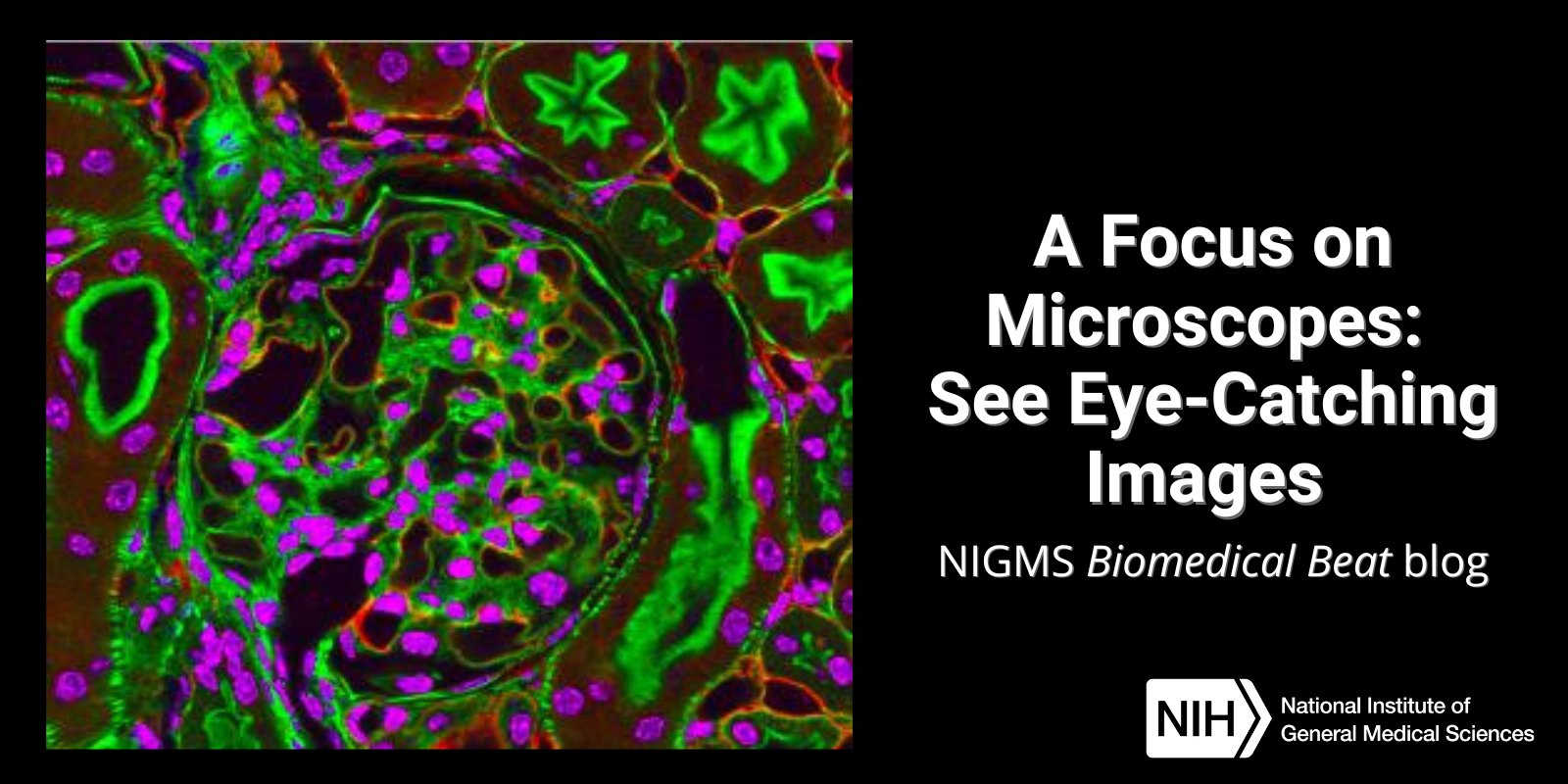Have you ever wondered what creates striking images of cells and other tiny structures? Most often, the answer is microscopes. Many of us have encountered basic light microscopes in science classes, but those are just one of many types that scientists use. Check out the slideshow to see images researchers have captured using different kinds of microscopes. For even more images of the microscopic world, visit the NIGMS Image and Video Gallery.
Continue reading “A Focus on Microscopes: See Eye-Catching Images”Posts by Abbey Bigler-Coyne
Explore Scientific Imaging Through a Virtual “Internship”
Students, teachers, and other curious minds can step into a scientific imaging lab with a free online interactive developed by NIGMS and Scholastic. Imaging tools help scientists unlock the mysteries of our cells and molecules. A better understanding of this tiny world can help researchers learn about the body’s normal and abnormal processes and lead to more effective, targeted treatments for illnesses.
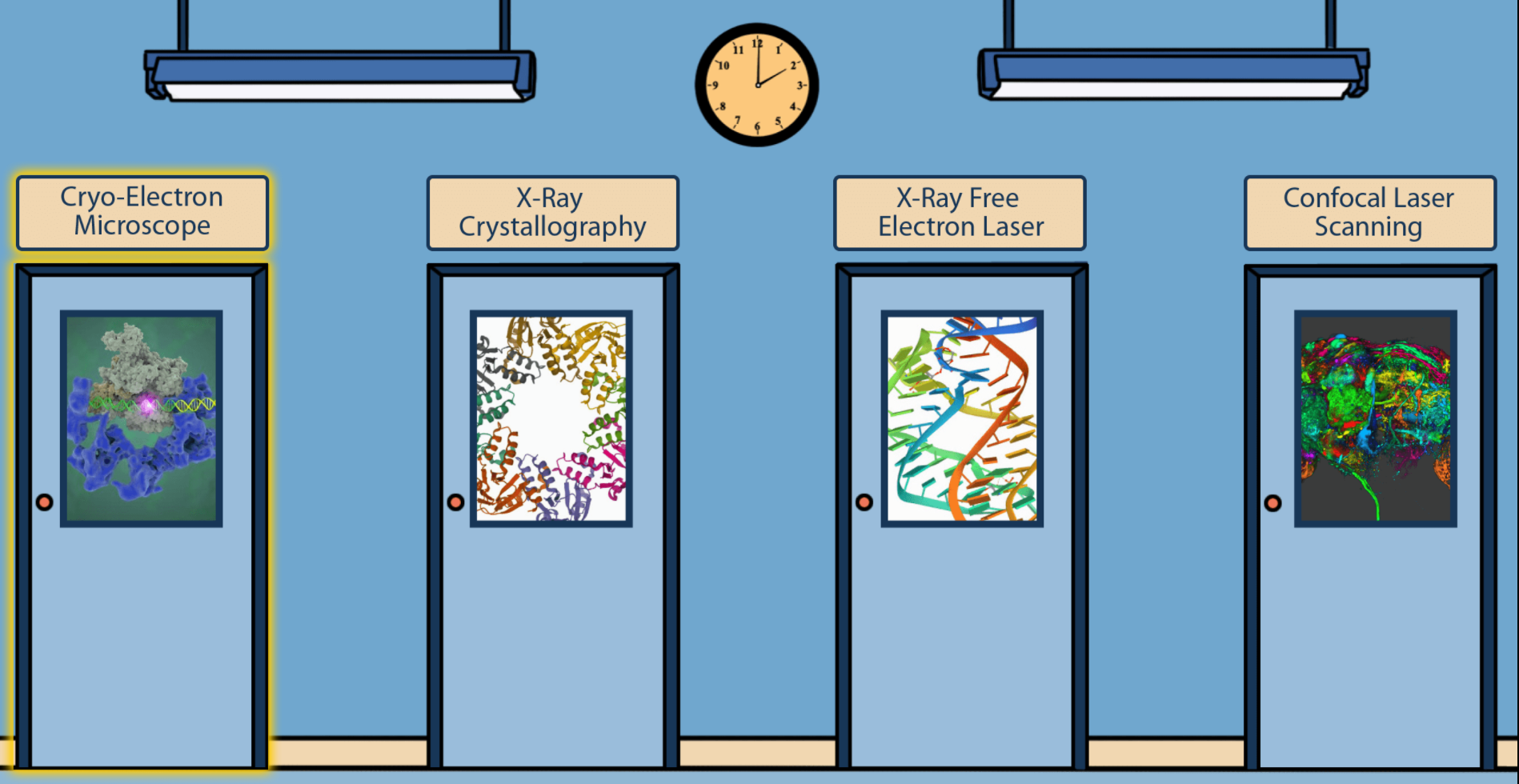
Career Conversations: Q&A with Microbiologist Josephine Chandler
Josephine (Josie) Chandler, Ph.D., first became interested in science when she took a high school chemistry class. In college, she fell in love with microbiology and ultimately earned a Ph.D. in the field. Today, she’s an associate professor of molecular biosciences at the University of Kansas in Lawrence, where her lab investigates interactions in bacterial communities. By better understanding these interactions, scientists may find new ways to stop infections or break down environmental pollutants—a process known as bioremediation.
Continue reading “Career Conversations: Q&A with Microbiologist Josephine Chandler”Dairy Deconstructor: How an Enzyme Enables Milk Digestion
Did you know that the lack of a single enzyme is responsible for lactose intolerance, a common condition that causes people to have trouble digesting milk? Fortunately, the enzyme is available in an over-the-counter pill for lactose-intolerant people who want to enjoy dairy products. Enzymes are molecules—almost always proteins—that speed up chemical reactions by reducing the amount of energy needed for the reactions to proceed. Without them, many processes in our bodies would essentially grind to a halt.
Continue reading “Dairy Deconstructor: How an Enzyme Enables Milk Digestion”Tackling Health Disparities in Louisiana
“If you bring a public health program to people where they live, you can get amazing results,” says Peter Katzmarzyk, Ph.D., a professor of pediatric obesity and diabetes at Pennington Biomedical Research Center, Louisiana State University. Specifically, bringing health programs into underserved communities can lead to strong engagement and positive changes in people’s health. Dr. Katzmarzyk is part of the NIGMS-funded Louisiana Clinical & Translational Science Center (LA CaTS), a collaboration between 10 academic, research, and health care delivery institutions that focuses on reducing health disparities in Louisiana.
Continue reading “Tackling Health Disparities in Louisiana”Quiz: Are You a Genetics Genius?
Genes are segments of DNA. They contain instructions for building one or more molecules that help the body work. Researchers in the field of genetics study genes and heredity—how certain traits are passed from parents to their offspring through DNA. NIGMS supports many scientists who investigate the genetics of people and research organisms to better understand human health and disease.
Take our quiz below to test how much you know about genetics. For more quizzes and other fun learning tools, visit our activities and multimedia webpage.
Continue reading “Quiz: Are You a Genetics Genius?”Science Snippet: Learn About the Cytoskeleton
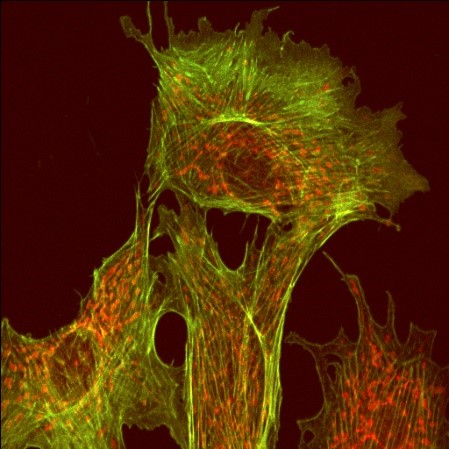
The cytoskeleton is a collection of fibers that gives shape and support to cells, like the skeleton does for our bodies. It also allows movement within the cell and, in some cases, by the entire cell. Three different types of fibers make up the cytoskeleton: actin filaments, intermediate filaments, and microtubules.
Powering Muscles
Actin filaments contract or lengthen to give cells the flexibility to move and change shape. Along with the protein myosin, they’re responsible for muscle contraction, including voluntary movement and involuntary muscle contractions, such as our heartbeats. Actin filaments are the thinnest and most brittle of the cytoskeletal fibers, but they’re also the most versatile in terms of shape.
Continue reading “Science Snippet: Learn About the Cytoskeleton”Pumping Iron: The Heavy Lifting Iron Does in Our Bodies
Our blood appears red for the same reason the planet Mars does: iron. The element may bring to mind cast-iron pans, wrought-iron fences, or ancient iron tools, but it’s also essential to life on Earth. All living organisms, from humans to bacteria, need iron. It’s crucial for many processes in the human body, including oxygen transport, muscle function, proper growth, cell health, and the production of several hormones.
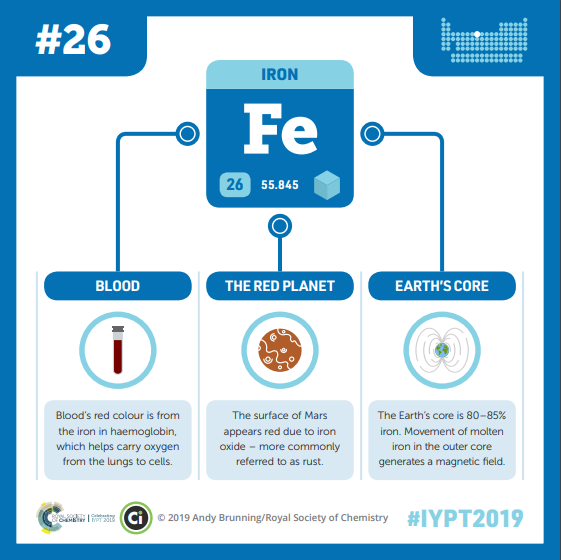 Iron is the reason both our blood and the planet Mars appear red. The element also makes up the majority of Earth’s core and generates the planet’s magnetic field. Credit: Compound Interest. CC BY-NC-ND 4.0. Click to enlarge
Iron is the reason both our blood and the planet Mars appear red. The element also makes up the majority of Earth’s core and generates the planet’s magnetic field. Credit: Compound Interest. CC BY-NC-ND 4.0. Click to enlarge
Gone Fishing: Teaching Bioinformatics With Skate DNA
As computers have advanced over the past few decades, researchers have been able to work with larger and more complex datasets than ever before. The science of using computers to investigate biological data is called bioinformatics, and it’s helping scientists make important discoveries, such as finding versions of genes that affect a person’s risk for developing various types of cancer. Many scientists believe that almost all biologists will use bioinformatics to some degree in the future.
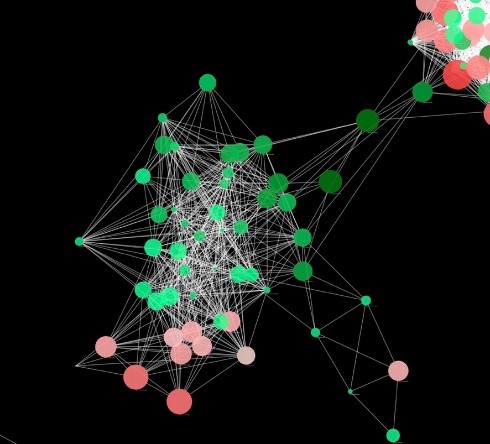
However, bioinformatics isn’t always included in college biology programs, and many of today’s researchers received their training before bioinformatics was widely taught. To address these gaps, the bioinformatics cores of the five Northeast IDeA Networks of Biomedical Research Excellence (INBREs)—located in Maine, Rhode Island, Delaware, Vermont, and New Hampshire—have worked together to offer basic bioinformatics training to students and researchers. The collaboration started in 2009 with a project where researchers sequenced the genome of a fish called the little skate (Leucoraja erinacea) and used the data to develop trainings.
Continue reading “Gone Fishing: Teaching Bioinformatics With Skate DNA”Making a MARC at Vanderbilt
“What we’re trying to do is support the students’ attachment to being a scientist, to becoming part of the community,” says Douglas McMahon, Ph.D., the Stevenson Professor of Biological Sciences at Vanderbilt University in Nashville, Tennessee, and a co-director of Vanderbilt’s Maximizing Access to Research Careers (MARC) program. MARC focuses on undergraduates from diverse backgrounds who are in the biomedical sciences and plan to pursue a Ph.D. or M.D./Ph.D. degree after graduation.

Credit: Allyson Arserio.
For years, NIGMS has funded MARC programs throughout the United States and its territories; Vanderbilt joined their ranks in 2020. In June of that year, Dr. McMahon and Katherine Friedman, Ph.D., an associate professor of biological sciences at Vanderbilt and co-director of its MARC program, welcomed the initial cohort of six rising juniors. “MARC is a great opportunity because it focuses on helping people reach their Ph.D. goals who don’t really have others around them who know how to get there,” says Sim Plotkin, a molecular and cellular biology major. “For me, that’s really helpful because I’ll be the first in my family to graduate from college.”
Continue reading “Making a MARC at Vanderbilt”

